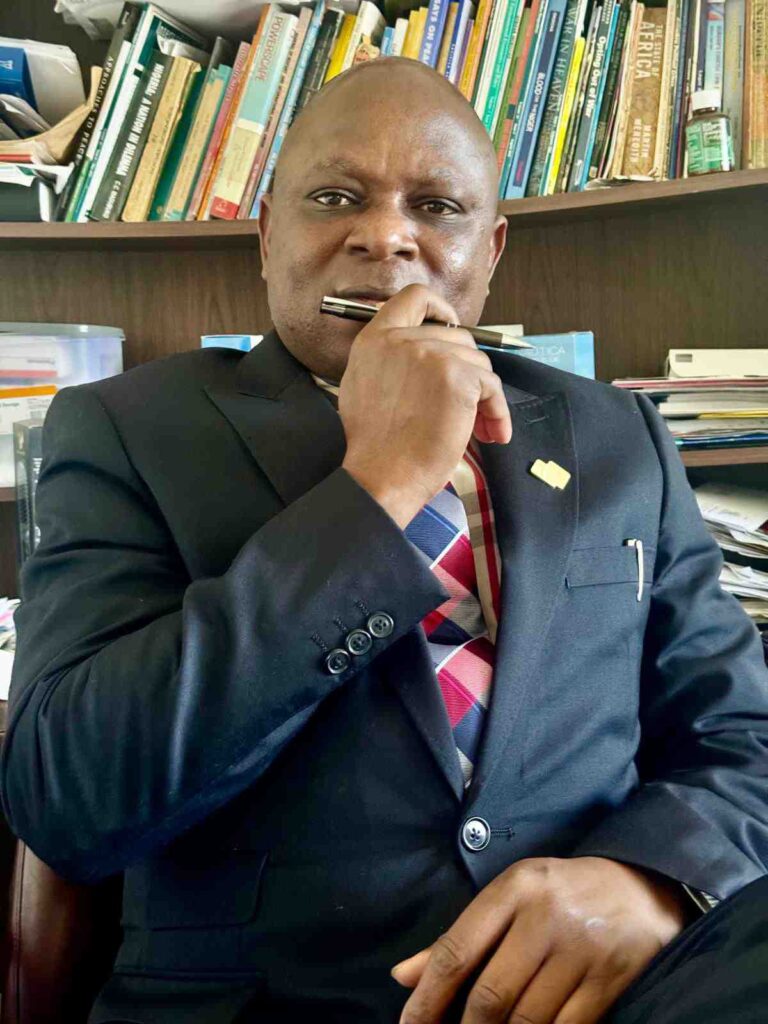• A Blueprint for fiscal federalism, regional autonomy, and national harmony

Christian C. Madubuko, PhD.
In 1954, the Macpherson Constitution was hailed as a landmark document that marked a significant milestone in Nigeria’s journey towards self-governance. While the constitution has undergone several amendments, its core principles of fiscal federalism, regional autonomy, and national harmony remains as relevant today as they were over six decades ago. This article proposes a revitalized Macpherson Constitution that incorporates the best elements of its predecessor, addressing Nigeria’s contemporary challenges and aspirations.
Fiscal Federalism: The Cornerstone of Prosperity
The Macpherson Constitution’s fiscal federalism framework is designed to promote economic development and reduce regional disparities. The constitution allocates powers and resources between the federal government and regional governments in a way that ensures both levels of government have a clear role to play in the country’s development. The federal government retains control over matters of national significance, such as defence, foreign affairs, and monetary policy, while regional governments are responsible for matters related to their respective domains, including infrastructure development, education, healthcare, and agriculture.
Regional Autonomy: Empowering Local Governments
Regional autonomy is a critical component of the Macpherson Constitution, allowing local governments to exercise greater control over their affairs. The constitution recognizes and respects the distinct cultural, linguistic, and historical heritage of each region. Regional governments are empowered to manage their own resources, create their own laws, and have a greater say in national decision-making processes. This devolution of power enables regional governments to respond more effectively to the unique needs of their constituents.
Self-Reliance: A Key to Economic Growth
Self-reliance is a vital element of the Macpherson Constitution’s vision for Nigeria’s economic growth. The constitution encourages regional governments to develop their own industries, promote local entrepreneurship, and invest in human capital development. The federal government provides guidance and support where necessary, while respecting the autonomy of regional governments to make decisions that benefit their constituents.
Regional Relationship with the Federal Government
The Macpherson Constitution establishes a framework for harmonious relationships between regional governments and the federal government. The federal government provides a framework for cooperation and coordination between regions, ensuring that national policies align with regional priorities. Regional governments have a seat at the national table, allowing them to participate in decision-making processes that affect their regions.
Exclusive List: Roles of the Federal Government
The Macpherson Constitution allocates specific responsibilities to the federal government, including:
Defence and national security
Foreign affairs
Monetary policy
Regulation of international trade
Regulation of telecommunications
Maintenance of public order
Implementation of national policies
Concurrent List: Roles of Regional Governments
Regional governments have concurrent powers with the federal government in areas such as:
Education
Healthcare
Infrastructure development
Agriculture
Energy generation and distribution
Environmental protection
State Police: A Critical Component of Security
The Macpherson Constitution recognizes the importance of state police in maintaining law and order at the grassroots level. State police forces are responsible for policing within their respective states, while the federal police force maintains national security and coordinates with state police forces.
Regional Government Structure
To enhance regional autonomy and self-reliance, Nigeria can be divided into six regions as it is presently consisted, each with its own government structure and a capital city. For instance, the underlisted regions with its state composition can form a regional government collapsing all states into a region in each case.
North-west Region (7 States): comprising Zamfara State, Sokoto State, Kaduna State, Kebbi State, Katsina State, Kano State, and Jigawa State
North-East Region (6 States): comprising Bauchi State, Borno State, Taraba State, Adamawa State, Gombe State, and Yobe State.
Northcentral Region (7 States): comprising of Niger State, Kogi State, Benue State, Plateau State, Nassarawa State, Kwara State, and the Federal Capital Territory (Abuja)
South-West Region (6 States): comprising Oyo State, Ekiti State, Osun State, Ondo State, Lagos State, and Ogun State.
South-East Region (5 States): comprising Abia, Anambra, Ebonyi, Enugu, and Imo States.
South-South Region (6 States): comprising Akwa Ibom, Bayelsa State, Rivers State, Delta State, Edo State, Cross River State.
Each region would have an elected or an appointed Vice-President who would serve as a deputy to the President of the Federal Republic of Nigeria at the Federal Level.
Key Provisions
Regional Autonomy: Each region would have its own constitution, with powers to create its own laws and institutions.
Revenue Allocation: A portion of national revenue would be allocated to regional governments based on a formula that considers factors such as population size and economic performance.
Checks and Balances: To prevent abuse of power, checks and balances would be established between the federal government and regional governments.
National Council of Regions: A national council comprising representatives from each region would serve as a platform for inter-regional dialogue and cooperation.
Conflict Resolution Mechanism: A dispute resolution mechanism would be established to address conflicts between regional governments and the federal government or between regions.
Conclusion
The revitalized Macpherson Constitution offers a framework for Nigeria’s prosperity by promoting fiscal federalism, regional autonomy, self-reliance, and harmonious regional relationships with the Federal Government. By empowering Regional Governments to take ownership of their development agendas while respecting national unity, this constitution can help address Nigeria’s pressing challenges and foster a brighter future for all Nigerians.
Recommendations
Establish a constitutional review committee comprising experts from various fields to draft a new constitution that incorporates the proposed framework.
Hold public consultations across Nigeria to gather input from citizens on the proposed constitution.
Enact the new constitution through a nationwide referendum or National Assembly.
Implement institutional reforms to ensure effective governance at all levels.
By embracing this revitalized Macpherson Constitution, Nigeria can take a significant step towards realizing its full potential as a united, prosperous, and strong nation.
Dr. Christian C. Madubuko – a Political & Diplomatic Historian, is a Senior Lecturer at the Department of History & International Studies, Nnamdi Azikiwe University, Awka, Nigeria, & a researcher at LaTrobe University, Melbourne, Australia. Madubuko was a former Anambra Commissioner for Trade and Commerce as well as the Executive Director of Operations, Anambra Internal Revenue Service. He writes from Canberra – The Australian Capital Territory, ACT. Mobile/WhatsApp: +2348162527884
E-mail: ogbekingdom@gmail.com




